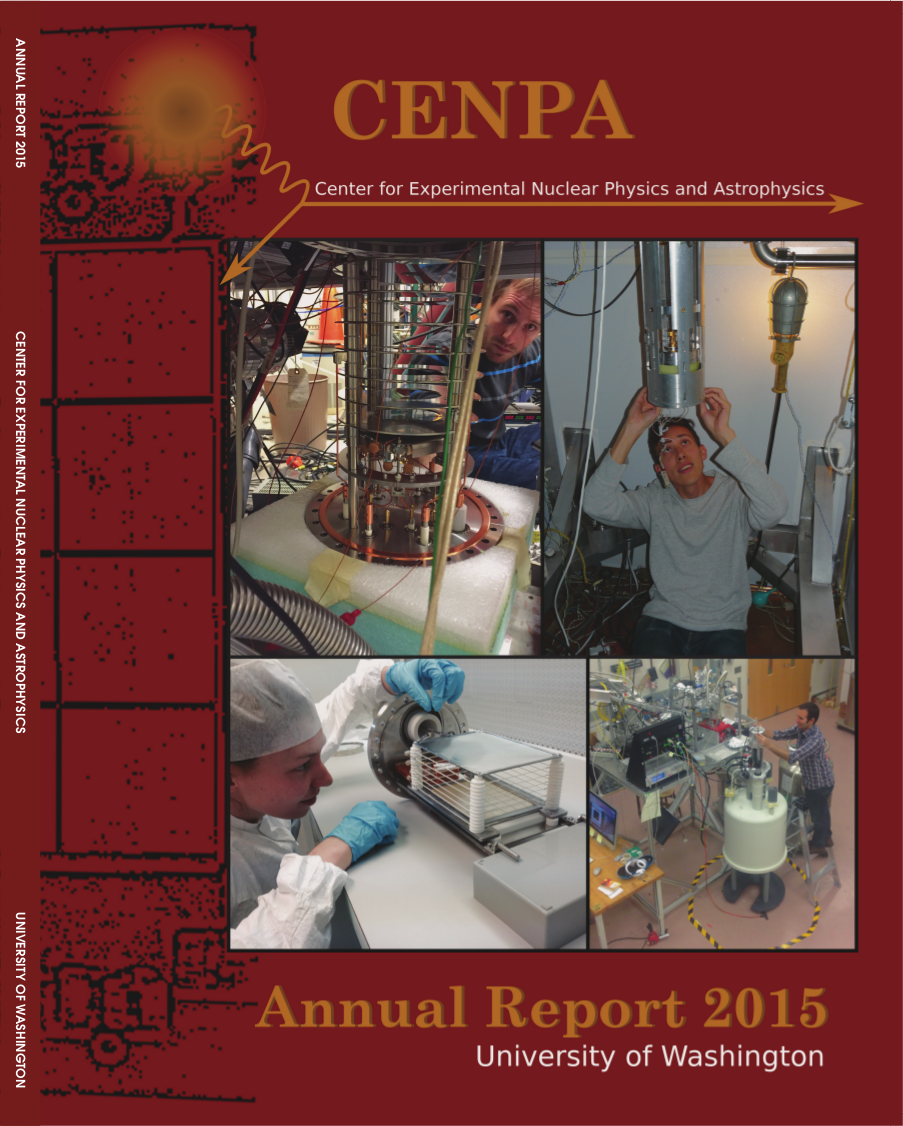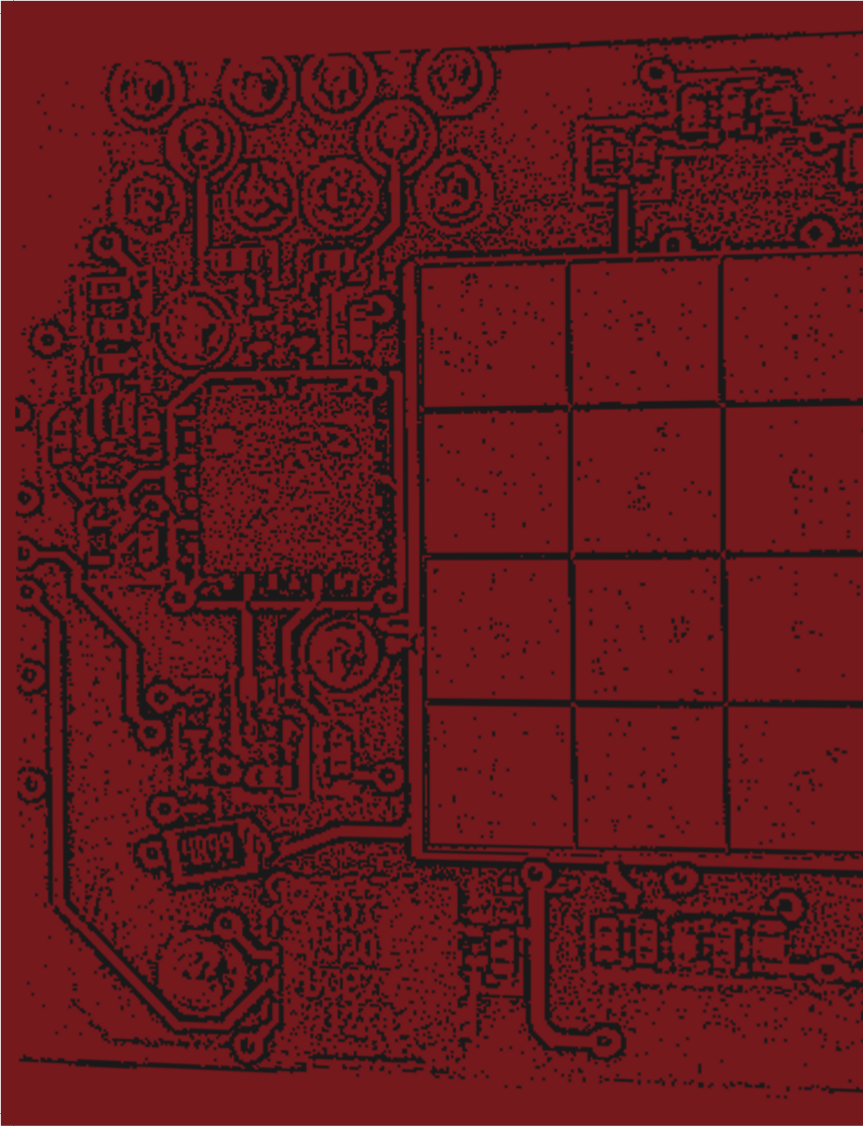Annual Report File:
Description:
ANNUAL REPORT
Center for Experimental Nuclear Physics and Astrophysics
University of Washington
April, 2015
Sponsored in part by the United States Department of Energy under Grant #DE-FG02-97ER41020.
This report was prepared as an account of work sponsored in part by the United States Government. Neither the United States nor the United States Department of Energy, nor any of their employees, makes any warranty, expressed or implied or assumes any legal liability or responsibility for accuracy, completeness or usefulness of any information, apparatus, product or process disclosed, or represents that its use would not infringe on privately-owned rights.
INTRODUCTION
1 Neutrino Research
KATRIN
1.1 KATRIN status and plans
1.2 Wafer characterization and noise investigation
1.3 Progress on veto upgrade
1.4 Analysis tools: status and development plan
1.5 Molecular effects and the KATRIN experiment
1.6 Update on the Tritium Recoil-Ion Mass Spectrometer
1.7 Single-electron detection for KATRIN time-of-flight operation
Project 8
1.8 Status of the Project 8 neutrino mass experiment
Ho-163
1.9 Searching for neutrino mass with 163Ho: spectrum shape
SNO
1.10 Search for hep neutrinos in SNO data
MAJORANA
1.11 Overview of the MAJORANA DEMONSTRATOR
1.12 String building for Module
1.13 High-voltage cable and feedthrough characterization
1.14 Low-background signal connector production and testing
1.15 Simulation and analysis activities for the MAJORANA DEMONSTRATOR
1.16 Low-noise forward-biased preamplifier tested with a mini-PPC Ge detector
2 Fundamental symmetries and non-accelerator-based weak interactions
Torsion-balance experiments
2.1 Progress on the upgrade of the wedge-pendulum experiment for testing short-
range gravity
2.2 Progress on a high-precision ground-rotation sensor for Advanced LIGO
2.3 Silica fibers for increased torsion-balance sensitivity
2.4 Parallel-plate inverse-square-law test
2.5 Improved short range spin-coupled force test
Non-accelerator-based weak interactions
2.6 The 199Hg electric-dipole-moment experiment
3 Accelerator-based physics
Accelerator-based weak interactions
3.1 Overview of the 6He experiments at CENPA
3.2 6He source developments for the β-ν angular correlation experiment
3.3 Systematics and calibrations of the array geometry and electric field for the
6He experiment
3.4 β-detector calibration for the 6He experiment
3.5 Time-of-flight spectrum and kinematics reconstruction using the β-recoil ion
coincidence measurement for 6He decay
3.6 Cyclotron radiation emission spectroscopy: an alternate approach to measur-
ing the Fierz interference coefficient
3.7 Recent upgrades and achievements of the 6He laser setup
4 Precision muon physics
4.1 Overview of the muon physics program
g-2
4.2 Overview of the g-2 experiment
4.3 NMR system for precision magnetic field measurement
4.4 PbF2 calorimeter with SiPM readout
4.5 Inflector beam-monitoring system
4.6 Test beam studies of the g-2 PbF2 calorimeter
4.7 SiPM pulse shape studies
4.8 Calorimeter simulation studies
4.9 Q method for anomalous precession frequency
4.10 Collimator optimization
4.11 Injection optimization
4.12 Measuring the effect of external, ppm-strength, periodic perturbations on a
1.45T magnetic field
4.13 Production of 400 pulsed proton NMR probes for the g-2 Experiment
4.14 Measuring the temperature dependence of the magnetic properties of petroleum
jelly for pulsed proton NMR
4.15 NMR DAQ for ring-magnet shimming
4.16 Applying time-frequency analysis techniques to nuclear free induction decay
(FID) signals
4.17 Quality-control database
4.18 Quality-control procedures for lead fluoride (PbF2) crystals
4.19 Quality control of magnetic components
MuSun
4.20 Overview of the MuSun experiment
4.21 2014 production run
4.22 Determining the target gas purity
4.23 Muon tracking in the TPC
AlCap
4.24 Nuclear physics input in the search for charged lepton flavor violation, the
AlCap experiment
5 Axion searches
ADMX
5.1 Status of ADMX
6 Relativistic Heavy Ions
6.1 UW URHI program overview
6.2 Evidence against “elliptic flow” derived from v2(pt) data
6.3 No centrality dependence for azimuth-quadrupole source boost
6.4 p-p event-wise mean-pt fluctuations at LHC energies
6.5 LHC Pb-Pb event-wise mean-pt fluctuations at 2.76 TeV
6.6 LHC Pb-Pb pt fluctuations vs Monte Carlo models
6.7 Bayesian inference and 200 GeV Au-Au azimuth-correlation models
6.8 Geometric interpretation of Bayesian inference
7 Other research
7.1 Final report on the nonlocal quantum communication test
8 Education
8.1 Use of CENPA facilities in education and course work at UW
8.2 Student training
8.3 Accelerator-based lab class in nuclear physics
9 Facilities
9.1 Facilities overview
9.2 Van de Graaff accelerator and ion-source operations and development
9.3 Laboratory computer systems
9.4 Electronic equipment
9.5 CENPA instrument shops
9.6 Building maintenance and upgrades
10 CENPA Personnel
10.1 Faculty
10.2 CENPA External Advisory Committee
10.3 Postdoctoral Research Associates
10.4 Predoctoral Research Associates
10.5 NSF Research Experience for Undergraduates participants
10.6 University of Washington graduates taking research credit
10.7 University of Washington undergraduates taking research credit
10.8 Visiting students taking research credit
10.9 Professional staff
10.10 Technical staff
10.11 Administrative staff
10.12 Part-time staff and student helpers
11 Publications
11.1 Published papers
11.2 Invited talks at conferences
11.3 Abstracts and contributed talks
11.4 Papers submitted or to be published
11.5 Reports and white papers
11.6 Ph.D. degrees granted
Cover:


